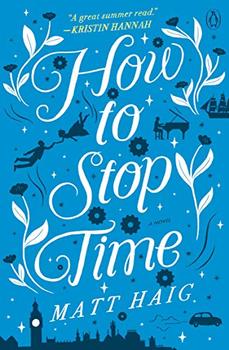Page 1 of 1
There is 1 reader review for How to Stop Time
Write your own review!
 Cloggie Downunder
a marvellous read!
Cloggie Downunder
a marvellous read!
“…now I often want to climb back into that time before. Before I knew Rose, before I knew what would happen to my mother, before, before, before… To cling to who I was, right at the beginning when I was just a small boy with a long name who responded to time and grew older like everybody else. But there is never a way back into the before. All you can do with the past is carry it around, feeling its weight slowly increase, praying it never crushes you completely.”
How To Stop Time is the sixth adult novel by British author, Matt Haig. Progeria is a condition in which the sufferer ages much faster than normal. Tom Hazard has the opposite: anageria. He ages much more slowly than the rest of us. It's 2020, he's just taken a job as a history teacher in a London high school, and he looks about forty-one. He's actually 439, so he has experienced some of the stuff he's teaching, first hand.
Living so long perhaps sounds like it could be advantageous, but even in the twenty-first century, when witch finders are no longer a threat, failure to develop wrinkles and other signs of ageing attracts notice, and not all of that is benign. This necessitates a nomadic lifestyle, moving on before close ties can form and questions begin to be asked. Falling in love is definitely not a good idea.
“For years now I had convinced myself that the sadness of the memories weighed more and lasted longer than the moments of happiness themselves. So I had, through some crude emotional mathematics, decided it was better not to seek out love or companionship or even friendship. To be a little island in the alba archipelago, detached from humanity’s continent, instead.”
The premise is certainly original and intriguing, and fans of Claire North’s work may notice some plot similarities (high praise). The narrative races around in time and place, but each time and location is clearly stated so this does not lead to confusion, but does allow Haig to give the reader a taste of Elizabethan London, the Roaring Twenties in Los Angeles and Paris, and late 19th Century England, as well as London and Byron Bay in the near future. Tom has brushes with fame, and there are a few star cameos (Shakespeare, F. Scott Fitzgerald). Surfing, a variety of musical instruments, the Plague, and 18th Century Pacific explorers all feature. Tom’s take on the history of “fake news” is particularly interesting. Captivating and moving, this is a marvellous read!
